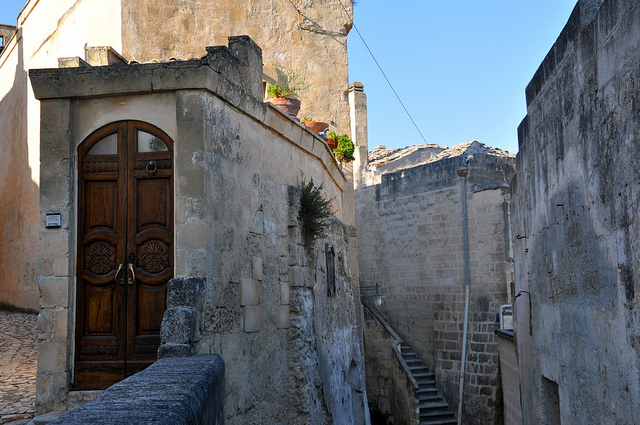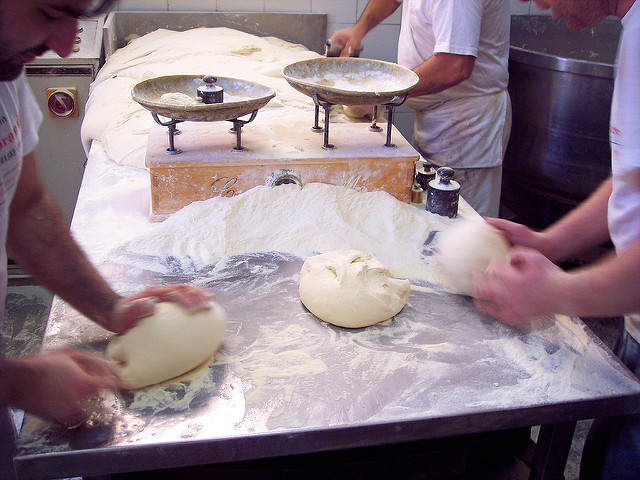Matera isn’t the first city you’d think of visiting when travelling through Italy, but you’d be mistaken not to. Nestled in the small southern Italian region, Basilicata, Matera is famous for its Sassi. Yes the literal translation of that word is well, rocks, but what it really defines is the prehistoric rock features that are in the heart of the town. Matera is one of UNESCO’s World Heritage sites and the European capital of culture 2019. As for Italy, we all know the usual cities, Rome, Florence, Venice too but Matera has something unique and beautiful to offer one of Italy’s most interesting cities. My mother’s family are from here so I hope you can sense a personal touch as I tell the tale of this little town.
History
Matera is actually one of the oldest cities in the world, dating back to the prehistoric troglodyte era. Its prehistoric nature still transpires in the town, as the Sassi appear untouched. In fact, the Sassi are thought to be one of the first human settlements in today’s Italy. The Sassi are habitations dug into the calcerous rock itself to form cave like structures. Today they represent the essence of Matera, a testimony to its history with the age of the 1950s crystallised within. The labyrinth of these cavernous houses that appear to be slotted one on top of the other, like tetris pieces, brings life to a panorama of homogenous colour.
It is hard to imagine that what is now a beautifully concocted city could once have been perceived as the “shame of Italy” for its appalling living conditions. In the 1950s Matera’s 16,000 inhabitants were relocated to the newer and more built up part that historically was an awkwardly designed government plan to re-establish better living conditions. Prior to the repurposing of the Sassi the old pathways became overrun and decrepit and the Sassi soon gained a reputation for crime and drug dealers, thieves and smugglers started roaming the area. Alongside this the Sassi’s previous inhabitants had difficulties adjusting to their new settlements, making this a dark period for Matera. What’s most striking about Matera’s panorama is the architectural juxtaposition of prehistoric settlements with rather dated 1950s apartment blocks. The modern refurbishing of the Sassi’s old centres has been infinitely innovative. Along with cave hotels, there are now restaurants, cafés, galleries and clubs, all immersed in the caves!

Food
Whilst the culinary tradition of the region of Basilicata, which Matera finds itself in, doesn’t tend to outshine that of it’s neighbouring region Puglia, it certainly does very well for itself. The plain ingredients and extremely flavourful simple foods are what brings colour its food tradition. Albeit simple, the bread in Matera is quite frankly soft, flavourful and delightful. Poor dishes like broad beans with turnip greens that are in reality rich in nutrients and flavours. And don’t get me started on the red wine, a sweet but bold bottle of Aglianico will make any meal from Matera a feast of kings.

For a more genuine Materan culinary experience La Capriata as a dish is the pride and joy of the city. A legume based meal sourced from the Sassi. A recipe reminding us of the love the farmers from Matera had for their soil. This recipe dates back to a tradition from the area whereby on the first week of August farmers would celebrate the end of the harvest and to celebrate the fruitful year, the women of the family would carry the grains and legumes, at the time considered a wealth for the families of Matera. All the legumes and grains from lentils to peas to chickpeas to beans would be cooked in a large saucepan and served to the neighbours residing near by. For this tradition no longer exists it is a subtle reminder of the Spartan life Materans used to lead. Restaurants in Matera propose contemporary takes on Matera’s peasant cuisine, although simple they are now very trendy. If a rich bean soup doesn’t sound inspiring enough for your palette orrecchiette, ear-shaped pasta, partnered with broccoli, rabe, chilli and breadcrumbs are also a local favourite. Through the food traditions of the town the ancient rural culture has been remarkably resilient.
Culture
The main cultural festival hub of the city happens once a year in early July. “La festa della bruna”. The sacrosanct festivity started as a religious procession but now calls for locals from the area in and around Matera to come together and build the tackiest and most grandiose “Carro della Bruna” (chariot) to out-cringe the one from the year before. “La festa della bruna” is celebration or honour of the town’s sacred protectress that dates way back to 1389. People, predominantly locals and tourists, gather in the streets for a week long of festivities with colourful light displays, market stalls in the city centre, town bands and grandiose processions. Events peak on the 2nd of July with a pagan-style rite of destruction of the chariot. All the hard work and effort placed on to building the grotesquely kitsch parade centre piece only to be demolished a couple of hours later, tradition says this needs to be done so in the name of tradition you better pool together your greatest smashing techniques.
As an atheist, the religious ceremonies don’t really attract me to the event. But there is so much more going on for a visit to Matera during this period to be worthwhile. Alongside the religious shenanigans there are endless firework displays, music from traditional town bands and the star of the show is the presentation of this year’s ‘chariot’. It’s different.

Every. Single. Year. Takes approximately 6 months to build. The process of building the chariot is extensive and tedious. The chariot has a procession throughout the city escorted by knights on horseback and when the chariot finally reaches its destination it makes three ritual circuits of the piazza. The streets are coated with spectators, in preparation for the demolishing of the humongous paper-machier creation. Bringing home a piece of the chariot is allegedly known to bring luck hence why the competition to grab a piece is ruthless.
Due to Matera’s primeval-looking scenery the Sassi themselves as well as around the area have been used by filmmakers as the setting for ancient Jerusalem. If Mel Gibson’s Passion of Christ rings any bells then you’ll now know that the set for that was Matera itself.
Surroundings
If Matera has sparked an urge in you to check out the rest of Basilicata then Metaponto is a must. I may be slightly biased when I suggest visiting this town because as a kid I spent endless summer days playing there on the beach. The “lungomare” is dotted with stalls selling all sorts of stuff, from jewellery to inflatable toys all the way to oriental ornaments for the home. However, if history is your cup of tea, then you’ll be interested to know that Metaponto was originally built by the ancient Greek to defend Sibari from the growing neighbour town of Taranto. And if this really suits your fancy then the Temple of Hera (not much of it left really) at Tavole Palatine is situated in a sanctuary near Metaponto. If history isn’t really your thing and you’re a nature kid, then the Pollino National Park could be perfect for you. It is the largest natural park in the country spreading across both Basilicata and Calabria and there are both natural and archeological sites to keep an eye out for. Specifically, the Bosnian pine, a very important member in the pine community, is the star of the show in this gorgeous park!
Cover Photo: Davide Palmisano(Flickr); Licence: CC BY 2.0










